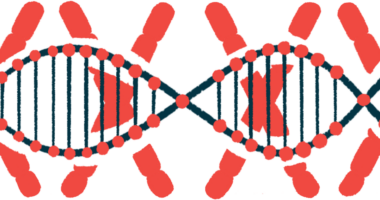Clinical Biomarkers Study in Boston Recruiting Children Ages 2-7

Children ages 2 to 7 with fragile X syndrome are being recruited at Boston Children’s Hospital for a study that aims to identify clinical biomarkers for the genetic disorder, according to a press release.
Travel stipends of up to $500 dollars are available, thanks to program donors, and free parking and child care for siblings are provided. Families will receive a small toy and $25 for participating.
The study, sponsored by a $90,000 research grant from FRAXA Research Foundation and with support from the Pierce Family Fragile X Foundation and the Autism Science Foundation, has been ongoing since 2017 and is resuming this year.
Fragile X, which affects both males and females, though usually with milder symptoms for girls and women, is characterized by developmental problems that include cognitive impairment, learning disabilities, and hyperactivity. It is caused by defects in the FMR1 gene, and is the most common inherited form of intellectual disability.
Researchers note that there currently is a lack of robust and reliable clinical biomarkers for fragile X. Such biomarkers, which can help determine if a treatment is working, are important for the successful translation of bench-to-bedside therapeutics.
“If we can determine what distinguishes one brain from another, and if a drug works with a particular neural [brain] marker or set of neural markers, this would permit matching drugs based on objective biological markers, a personalized medicine approach,” said Carol Wilkinson, MD, PhD, a FRAXA fellow and the lead investigator of the study.
Right now, the only testing is by trial and error, Wilkinson said.
Electroencephalograms, known as EEGs, are a noninvasive monitoring method for brain activity. Such measures may be candidate biomarkers in fragile X, as EEG recordings of both adults with fragile X and mouse models of the disease consistently show alterations during rest and task-related activity. However, when these alterations occur during development is not known, and EEG studies have not focused on children with fragile X.
Wilkinson’s team at the Boston Children’s Hospital, in Massachusetts, now is investigating how differences in brain activity, as measured by EEG, can affect learning, language, and behavior in children with fragile X.
Initial results of the study, “Increased aperiodic gamma power in young boys with Fragile X Syndrome is associated with better language ability,” were published in the journal Molecular Autism in February of this year.
The team analyzed EEG measures from 11 young boys, ages 2.5 to 7 years, with mutations in the FMR1 gene. Those measures were compared with 12 age-matched and 12 cognitive-matched typically developing boys.
EEG measures electrical activity in the brain as brainwaves (oscillations) with different frequencies. Brainwaves are produced by electrical pulses from nerve cells, or neurons, communicating with each other. They are divided into different bandwidths, specifically infra-low, delta, theta, alpha, beta, and gamma, that change according to what an individual is doing and feeling.
Resting-state EEG measures in boys with fragile X identified similar increases in gamma power previously reported in adults and mouse models. Also, there was a positive association between EEG resting-state gamma power measures and language development, which may reflect compensatory mechanisms.
However, the researchers recognized certain limitations to their study’s findings — one of which, notably, was its small sample size. To overcome these limitations, the team now is recruiting more children with fragile X, ages 2 to 7, to participate in the continued study.
Families are invited to a four-hour clinical visit to the Boston Children’s Hospital, in which clinicians will use visual and auditory tests to evaluate the child’s thinking and motor and language skills, as well as social communication.
The EEG evaluation rooms are designed to be quiet and comfortable, with themes that include a jungle, an aquarium, and a farm. The child would wear an EEG cap, which is like a hair net with embedded buttons and a chin strap to hold it on snugly. During the testing, the child sits on a parent’s lap on a chair and is assisted by a research assistant, while another investigator collects the data.
There is no clinical benefit for children participating in the study. However, the researchers note that if they can successfully identify biomarkers, the fragile X community could have a powerful tool for assessing new treatments in future clinical trials.
To learn more about the study, parents and caregivers can watch a video available from lead investigator Carol Wilkinson. In it, she shows a stuffed bear wearing the EEG cap.
Those interested in participating in the study can call (857) 218-4779 or write to [email protected].






